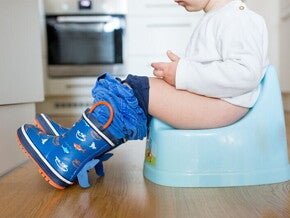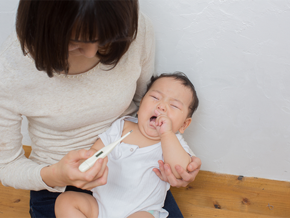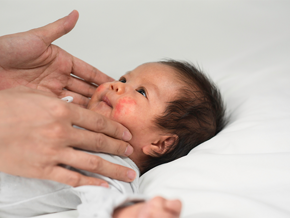
Foods and Medications That Can Trigger G6PD Deficiency Symptoms
Every parent hopes their little one is born healthy, so finding out they have a congenital disorder like G6PD (Glucose-6-Phosphate Dehydrogenase) deficiency can feel scary. But while the name sounds intimidating, the good news is it’s manageable with the proper knowledge. You can do a lot to help your child with G6PD live a happy and healthy life by knowing G6PD deficiency symptoms.
Some common foods, medications, and even household items can trigger symptoms in children with G6PD deficiency, so knowing what to avoid is key. This guide will walk you through those hidden dangers and warning signs and, most importantly, the help your toddler needs to live a happy, healthy life.
G6PD Deficiency Symptoms
G6PD is an enzyme that helps keep red blood cells healthy and working well. With G6PD deficiency, red blood cells break down faster than they can be made (a process called hemolysis) and can lead to hemolytic anemia.
For newborns, G6PD deficiency might show up as prolonged jaundice (yellowing of the skin and eyes), which means the baby’s liver cannot process waste properly.
Apart from jaundice, other G6PD deficiency symptoms include:
- Pale skin
- Dark or tea-colored urine
- Persistent or severe tiredness
- Dizziness
- Headache
- Difficulty breathing
- Increased heart rate
- Abdominal or back pain
Screening for G6PD Deficiency
If a newborn has severe jaundice and it goes untreated, it can lead to a rare but serious issue called kernicterus. This happens when bilirubin builds up in the body and can start affecting the brain, which can lead to lasting damage. It's a scary thought, but the risks can be avoided with early diagnosis.
In the Philippines, you can know if your baby has G6PD deficiency because of the law-mandated newborn screening conducted hours after birth. This blood test is crucial because G6PD deficiency in newborns occurs every 1 out of 63 Filipino births, according to the National Institutes of Health (NIH).
More importantly, most babies with G6PD deficiency can appear healthy at birth and may never have symptoms unless they encounter a trigger.
Triggers of G6PD Deficiency Symptoms
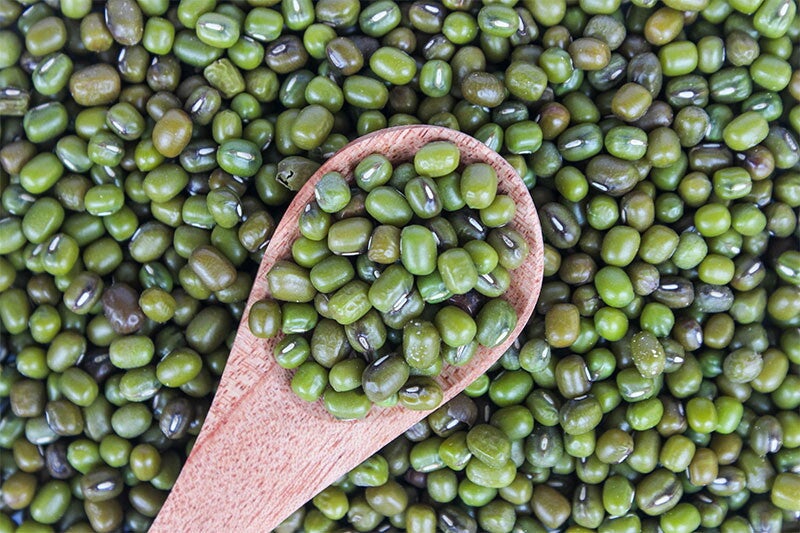
Munggo is on the list of G6PD list of foods to avoid.
G6PD deficiency has no cure, so you'll have to work closely with your pediatrician to manage G6PD deficiency symptoms. Everyday choices, like what snack to give or which fever medicine to reach for, suddenly matter a lot more. If your baby was diagnosed with G6PD deficiency, here's a list of food, medication, and chemicals to avoid.
Foods to skip
Some foods contain chemicals and compounds that your baby's body cannot properly break down when they have G6PD deficiency. According to the NIH, these include:
- Fava beans
- Legumes like abitsuelas, garbanzos (chick pea), kadyos, and munggo
- Blueberries
- Bitter gourd (ampalaya)
- Tonic water
The G6PD Foundation also includes peanuts, fenugreek, and artificial food dyes in processed foods in their G6PD list of foods to avoid.
Medications to avoid
Some medications safe for most children cause oxidative stress to those with G6PD deficiency. Oxidative stress occurs when there are too many free radicals in the body and insufficient antioxidants to neutralize them. This imbalance can cause cell and tissue damage, leading to health problems.
Some common medications that pose a danger to children with G6PD deficiency include:
- Antibiotics, particularly those with “sulf” or “sulph” in their names
- Anti-malarial drugs (most often with “quine” in their names)
- Certain painkillers and fever medicine
Always check with your child's doctor if a medicine is safe before giving it to a child with G6PD deficiency.
Chemicals to steer clear of
Chemicals and other substances can be toxic to a child with G6PD deficiency. Avoid exposing your child to these items, especially while waiting for the newborn screening test results. These include:
- Chemicals, such as methylene blue, arsine, phenylhydrazine, toluidine blue, trinitrotoluene, aniline dyes
- Menthol in topical muscle and pain relief gels and oils, medicated plasters, and mouthwash
- Camphor in liniments
- Naphthalene typically found in mothballs)
- Parabenzene dichloride / dichlorobenzene compound typically found in toilet deodorizers
- Henna
- Herbs like honeysuckle flower, Chimonanathus flower, 100% pearl powder, Figwort flower, Acalypha Indica
Tips to Keep Your Child Safe from G6PD Triggers
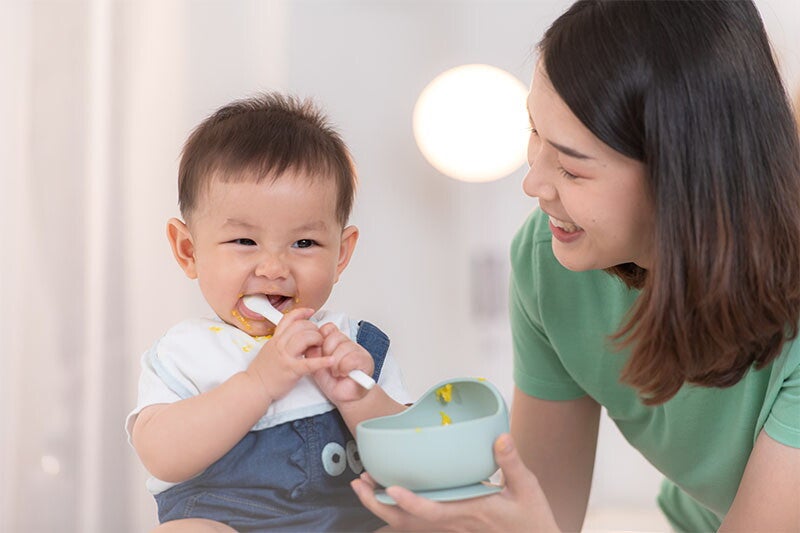
Severe cases of G6PD deficiency can lead to rare inherited form of anemia even without specific triggers.
Keeping your G6PD baby healthy can feel overwhelming at first, but developing daily habits can keep your child safe and free from triggers. Here are some easy, practical ways to get you started.
1. Put up a list of foods and items to avoid visible to everyone.
You can post it in convenient spots like your fridge, pantry, supplies closet, or medicine cabinet. This makes it easier to double-check labels against the list. You can also place one in your purse or baby bag or save a copy in your phone to make a quick reference while shopping.
2. Get into the habit of label-checking.
Whether it’s food, medicine, ointment, or even baby wipes, make it a habit to always read the label before giving or applying anything to your child. Always check the ingredients and compare them to your list of oxidative substances.
3. Track your child’s symptoms.
You can keep a journal or write on your phone. List down what your child ate or was exposed to that day to help you and your doctor determine possible triggers and adjust your child’s care plan.
4. Build a G6PD-safe first aid kit.
Talk to your pediatrician about fever reducers and cold medications safe for your baby. Stock your medicine kit with these approved items and label them clearly to make identifying what’s okay to use easier.
5. Educate everyone involved in childcare.
Ensure yaya, lolo and lola, or even your child’s teachers know about your baby’s condition. You can share the food, medication, and chemicals list to avoid. The more people are aware of your little one’s condition, the better protected they will be.
6. Create a safety routine when eating out or traveling.
When dining out, inform the waiter about your baby’s food restrictions, and avoid dishes with unknown sauces or ingredients. Bring your own snacks and medications when traveling to avoid any incidents.
7. Talk to your child.
At an appropriate age, talk to your child about their condition. Explain what G6PD deficiency is and teach them to be careful about what they eat, what medications to take, and what to apply to their body.
G6PD deficiency is a manageable condition as long as you stay informed and proactive about maintaining your little one’s safety. Once you know what triggers to avoid and identify G6PD deficiency symptoms, it will eventually become part of your daily parenting routine. Over time, you’ll grow more confident, and your child will grow up happy, healthy, and thriving.
What practical tips have you learned while managing your child’s G6PD deficiency? Share it on ParenTeam’s exclusive Facebook group for parents!
References
Newborn Screening Reference Center, “Glucose-6-phosphate dehydrogenase Fact Sheet,” Newborn Screening, accessed May 16, 2025, https://newbornscreening.ph/wp-content/uploads/2024/11/G6PD-for-Doctors-2024.pdf.
National Cancer Institute, “NCI Dictionary of Cancer Terms,” Cancer.gov, accessed May 16, 2025, https://www.cancer.gov/publications/dictionaries/cancer-terms.













